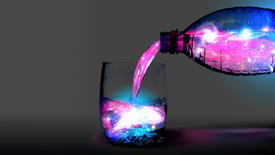negative calorie foods

ieva015
Posts: 93 Member
so i had a lot of confusion about negative calorie foods
i know that they have some calories in them, but digesting them burns more calories than they contain
so can i go over my maintenance calorie number with them and not gain weight?
thanks
i know that they have some calories in them, but digesting them burns more calories than they contain
so can i go over my maintenance calorie number with them and not gain weight?
thanks
0
Replies
-
They don't exist. http://www.answerfitness.com/269/negative-calorie-foods-fact-fiction/
An excerpt from the above link:
Is Celery Really a Negative Calorie Food?
While the list of negative calorie foods has ballooned to include everything from beets to strawberries and mangoes (yes, I’m being serious here), celery is the most commonly cited negative calorie food.
From a nutritional standpoint, celery is pretty much empty. It’s basically made up of water, sodium, some trace minerals and something called cellulose — which is a form of vegetable fiber than the human body cannot digest. It contains no protein or fat and marginal carbohydrates. Any other nutrition in celery is in the form of vitamins, minerals and enzymes, which contain no calories.
In fact, aside from iceberg lettuce and cucumbers, you probably couldn’t find a less nutritious, lower-calorie vegetable to eat. These foods are already about as close as you can get to eating zero calories. Close, but not quite, as we’ll see in a moment.
A large, stalk of celery weighing in at 2.2 ounces contains only nine calories. Negative calorie diet advocates claim that the mere process of chewing and digesting celery requires an expenditure of energy that exceeds the 9 calories present in the celery. Therefore, the argument goes, celery has “negative calories.”
Again, this all sounds good in theory, but what about in practice?
Issues with the Negative Calorie Foods Theory
There are some flaws with the negative calorie food theory, however.
First, the reason that certain foods like celery are already low in calories is exactly because of their high-non-caloric nutritional content. The fact that cellulose, water and minerals like sodium contain no calories is already figured into the food’s caloric-content. That’s why it has minimal calories in the first place. Negative food advocates want to double-dip here, and have you believe that the non-caloric nutrients like cellulose lower its effective calorie levels even more, but that’s just not how it works. This is already baked-in.
Second, the whole argument that the body burns more calories chewing and digesting negative calorie foods like celery is also suspect.
Yes, the body does expend a certain amount of energy to digest food, but that expenditure — even with foods that contain a high-percentage of non-caloric nutrients like cellulose — is actually fairly minimal.
Typically, the body will expend 10 - 15 percent of the calories you consume each day to fuel digestion. Let’s just throw the negative calorie food gurus a bone and say that for foods that are rich in non-digestible nutrients like cellulose, that number is actually as high as 50 percent of calories consumed (I have no evidence for this claim — I’m just being generous to prove a point.)
In the case of celery — the poster child of all negative calorie foods – you would be burning an extra 4.5 calories per each 9 calorie, 2.2 oz serving of celery. That would put your effective net calories at 4.5 (9/50% = 4.5 calories) — hardly “negative calorie” territory.
And because the amount of energy expended on digestion of foods is always expressed as a percentage, to have a negative calorie effect, digestion would have to constitute at least 101% of the energy consumed in order to create a negative calorie environment — something which is physically impossible.
So it appears that the food that is the best candidate for qualifying as a negative calorie food — celery – can’t even hit the break-even point, let alone become “calorie-negative.”0 -
If you eat a stalk of celery for 3 calories, those 3 calories still contribute to your net intake. Digesting one food doesn't take any more or less energy than it would to digest another. "Negative calorie foods" should really just be called "extremely low calorie foods". They are mostly water.
(protip: no matter how much lettuce you can eat in an entire day, it is not going to have a significant enough caloric impact to ruin your weight loss. Seriously, eat an entire head of celery today, it's not going to matter but you will probably get really sick of celery)0 -
These do not exist. Sorry.0
-
..0
-
thank you all for the answers0
This discussion has been closed.
Categories
- All Categories
- 1.4M Health, Wellness and Goals
- 397.1K Introduce Yourself
- 44.2K Getting Started
- 260.9K Health and Weight Loss
- 176.3K Food and Nutrition
- 47.6K Recipes
- 232.8K Fitness and Exercise
- 456 Sleep, Mindfulness and Overall Wellness
- 6.5K Goal: Maintaining Weight
- 8.7K Goal: Gaining Weight and Body Building
- 153.4K Motivation and Support
- 8.3K Challenges
- 1.3K Debate Club
- 96.5K Chit-Chat
- 2.6K Fun and Games
- 4.6K MyFitnessPal Information
- 16 News and Announcements
- 18 MyFitnessPal Academy
- 1.4K Feature Suggestions and Ideas
- 3.1K MyFitnessPal Tech Support Questions

